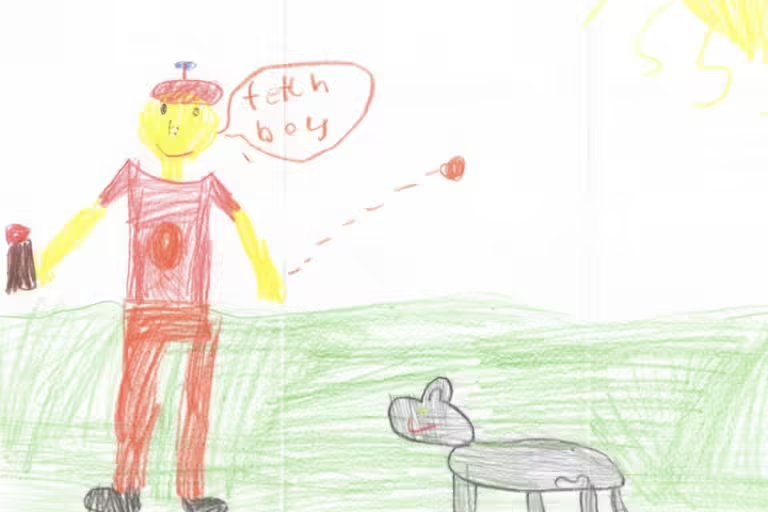
Drawings by children who participated in the Animal Pen Pal Program
Courtesy of YAPS and Ann Gillespie
Seriously ill children and teens appear to be reaping emotional benefits from exchanging letters with cancer-stricken cats and dogs.
The interspecies pen pal program allows young people suffering from cancer or blood disorders to bond with animals facing similar challenges, and allows their owners to write letters on their behalf.
“There’s something truly unconditional about the love of animals and the listening they give,” says Anne Ingalls Gillespie, a former pediatric nurse at the University of Colorado. “They don’t argue or ask questions, they just listen and acknowledge.”
Animal-assisted therapy – where patients spend time with trained dogs, cats or horses – has previously been shown to provide emotional and mental health benefits to young cancer patients.
But some cancer patients have such weak immune systems that doctors forbid them from having contact with animals. Wanting to find a solution for young patients, Gillepsy created Youth and Pet Survivors, a letter-writing program that allows children and teens to write letters to animals.
Gillespie said the patients’ pen pals are animals undergoing similar treatment for life-threatening illnesses. She reached out to veterinary oncologists to find willing pet owners who wanted to participate, then trained them to use their pets’ voices to communicate with seriously ill children and teens.
To evaluate the program’s effectiveness, Gillespie and his colleagues collected 157 letters written by 16 young patients, with the consent of the patients, their parents, and their pet owners. The correspondence lasted from four months to five years, resulting in between three and 39 letters per child. Most of the letters were handwritten and included colorful drawings and photographs, but some were typed and printed.
While most of the children’s letters described their illnesses and treatments, a major theme was the developing relationships between the patients and their pets. “As time went on, the stories of the children’s illnesses faded into the background and the letters became more about their triumphs, hopes, dreams and joys,” Gillespie says.
Gillespie said analysis of the letters revealed that the correspondence improved patients’ quality of life, including improved mood, distraction from problems and reduced overall psychological distress, similar to what’s seen in face-to-face animal therapy programs.
This was probably because the letters allowed patients to express themselves freely and without judgement, and they offered unconditional acceptance, a sense of inclusion and belonging, she said.
“If a child writes, ‘I’m scared of my upcoming MRI,’ or ‘I feel like the kids in my class don’t understand what I’m saying,’ a dog or cat might verify that,” Gillespie says. “They don’t give advice; they just say, ‘Yeah, I get it.'”
Pet owners also reported feeling happier as a result of participating in the program, adding that the experience gave meaning to their own experiences: “They were happy that their dog had made a difference in a child’s life, and it helped them process their feelings about their pet having cancer.” Some explicitly stated that the pets themselves had benefited, but how and why this occurred requires further investigation.
topic:

